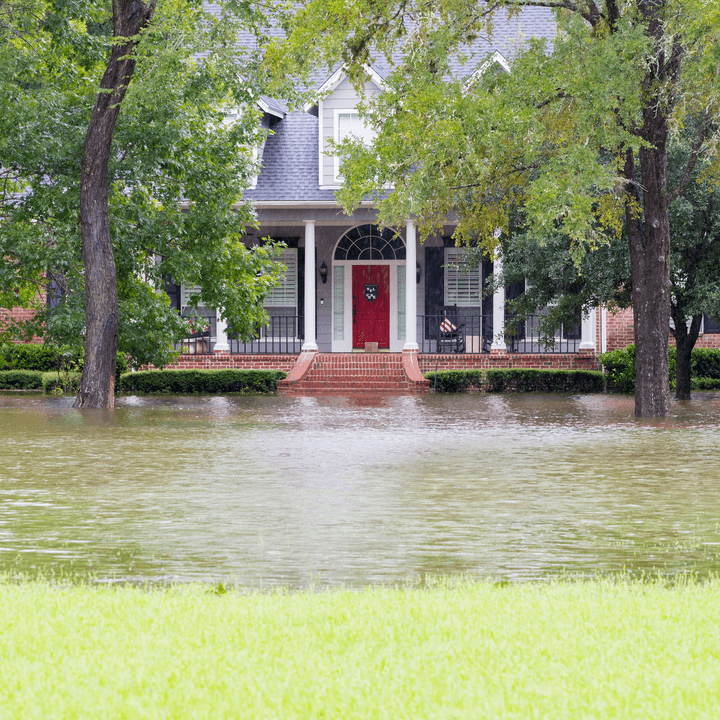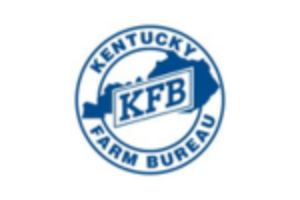
If you don’t think you’re at risk of flooding, you may want to think again — all 50 states have experienced flooding in the past five years, according to FEMA. Just one inch of water has the potential to cause $25,000 worth of damage to your property. Flooding is the most common and most costly natural disaster in the United States. Fortunately, you can purchase flood insurance to protect you from damage caused by a weather-related flood.
Save Money by Comparing Insurance Quotes
Compare Free Insurance Quotes Instantly
Secured with SHA-256 Encryption
What is flood insurance?
Flood insurance offers protection to homeowners, condo owners, renters and businesses to cover damage and losses caused by flooding from a natural disaster. Your standard homeowners insurance policy won’t typically cover flooding caused by severe weather. Instead, home insurance only covers flood damage to your home caused by something sudden or accidental in your home, such as an appliance malfunction.
What does flood insurance cover?
There are two types of flood insurance policies offered: building property coverage and personal property coverage, also known as contents coverage. When purchasing flood insurance, you may purchase one or both. The building property coverage with the National Flood Insurance Program (NFIP) has limits up to $250,000 and the personal property coverage has limits up to $100,000. According to the NFIP, this is what is covered by each policy:
Building property coverage
- The insured building and foundation
- Electrical and plumbing systems
- Central air-conditioning equipment, furnaces and water heaters
- Appliances such as refrigerators, cooking stoves and built-in appliances, including dishwashers
- Permanently installed carpeting
- Permanently installed paneling and wallboards, bookcases and cabinets
- Window blinds
- Detached garage up to 10% of the coverage (detached buildings other than a garage need a separate building property policy)
- Debris removal
Personal property coverage
- Personal belongings (including furniture, clothing and equipment)
- Curtains
- Portable and window air conditioners
- Portable microwave ovens
- Portable dishwashers
- Carpets not otherwise included in the building property coverage
- Clothes washers and dryers
- Freezers and the food in them
- Valuables up to $2,500
Flood insurance may not cover all expenses associated with a flood. It will not cover living expenses for temporary housing, loss of use, vehicles, money, precious metals, valuable papers or property, or belongings outside the building like a deck, fence or pool. In order to be covered by the policy, damages must be directly caused by flooding and not caused by neglect of the property owner (such as mold or mildew).
Do I need flood insurance?
Flood damage can be worse than fire damage. When floodwaters enter your homes, they’re likely contaminated, so everything touched by floodwaters will need to be replaced including appliances, walls, floors, furnishings and any clothing and other personal items. Additionally, homes affected by a flood are likely to grow mold. Even if items, such as clothing, were not touched by floodwaters, they may still be affected by fumes and humidity caused by the flood, requiring replacement.
Damaging floods can be caused by a number of things: heavy rain, hurricanes, storm surge, or even melting snow. When deciding if you need flood insurance, it’s important to identify the risk of flooding in your area.
The hurricane season in the United States begins in June and continues through November. In the 2018 hurricane season, 15 storms formed in the Atlantic region and 8 of those were hurricanes. There were two major hurricanes of Category 3 or above; Hurricane Florence and Hurricane Michael.
Hurricane Florence was a slow-moving hurricane that hit the Carolinas in September, 2018. The storm broke records dropping nearly 3 feet of rain in some areas. The estimated loss from Florence is between $2 billion and $5.5 billion, excluding National Flood Insurance Program losses.
Flood Zones
FEMA identifies the flood zones that determine the risk of any given area. You can use the FEMA Flood Map Service Center to see the flood risk of the area your home or building is located in. Special Flood Hazard Areas (SFHA) are identified as Zone A, Zone AO, Zone AH, Zones A1-A30, Zone AE, Zone A99, Zone AR, Zone AR/AE, Zone AR/AO, Zone AR/A1-A30, Zone AR/A, Zone V, Zone VE, and Zones V1-V30. Areas with moderate flood hazard are identified as Zone B or Zone X (shaded) and areas outside of SFHA with minimal flood hazard are identified as Zone C or Zone X (unshaded).
But even so, the NFIP reports that 20% of flood claims happen to properties that aren’t located in a high-risk area. If you live near a flood hazard area, you may be likely to experience a flood. Depending on your area and your mortgage lender, you may be required to purchase a flood insurance policy.
Federal flood maps are often poor indicators of flood exposure. During Hurricane Florence, large land areas, often newly developed that had never flooded before or were not predicted to be in mapped flood zones, saw flood losses never anticipated. Likewise, when Hurricane Harvey hit in 2017, homes that were never expected to be near a flood in Harris County, Texas, were inundated with three to four feet of water.
What happens if I don't have flood insurance?
More than 90 percent of homeowners in the Carolinas didn’t have flood insurance as Hurricane Florence hit. And even worse, less than 5 percent of inland Carolinas homeowners were covered for flood. Florence created devastating inland flooding in North and South Carolina, creating billions in losses from flood waters that were significantly outside of government mapped flood zones and were not expected.
Carolina homeowners who didn’t have flood insurance faced devastating financial impacts from Hurricane Florence. After a flood, especially in a widespread event like a hurricane that affects many people in a given area, it can take a long time before your home is livable again, which can cost you a lot of money for alternative living expenses.
FEMA has an Individual and Households Program (IHP) that offers assistance if you don’t have flood insurance coverage, but FEMA can only offer small $1,000 to $3,000 dollar grants for temporary assistance, or loans up to $30,000 only in qualified circumstances. These amounts are wholly inadequate for those not insured for flood and this is why flood insurance is so important.
When should I buy flood insurance?
Flood insurance has a waiting period, which requires homeowners to purchase a policy well before a flooding event occurs in order for them to get coverage for it. Typically, the waiting period is at least 30 days, but it can be even longer if there’s a known potential flooding event on the way. This means that you can’t wait for a storm to buy flood insurance. You much purchase it ahead of time in order to receive coverage.
There are additional resources available online that can help you evaluate your flood risk. One of those online resources is Buyer Be-Where, which helps homeowners in select areas around the country understand their risk for floods in addition to other disasters, such as hurricanes and hazardous waste.
“The future of communicating risk to decision makers or homeowners will be over the Internet. We’re just scratching the surface,” said Sam Brody, a Texas A&M professor who created Buyer Be-Where.
Brody said he had people coming up to him after Hurricane Harvey — the second-costliest hurricane in U.S. history — saying they wish they’d known about the system he’d created before the storm. For homeowners, it’s critical to evaluate and understand flood risk long before a storm strikes.
In order to protect your car from flooding, you'll need to make sure you have comprehensive coverage on your auto insurance policy. You can find more information about this on our blog about car insurance covering flood damage.
Save Money by Comparing Insurance Quotes
Compare Free Insurance Quotes Instantly
Secured with SHA-256 Encryption
How much is flood insurance?
The average cost of flood insurance is about $700 per year, according to FEMA. However, you may pay considerably more or less depending on your flood risk and your coverage needs. You can reduce the cost of flood insurance by choosing to have a higher deductible.
Flood insurance is also cheaper in areas that are not in the federally mapped flood zone areas. The cost of flood insurance is a small cost compared to the price you may have to pay if you experience a flood given you could face $25,000 worth of damage for just one inch of water in your home.
Here are some of the factors that determine the cost of flood insurance:
- Flood risk (your flood zone)
- Your deductible
- Your coverage
- Age of your building
- Building occupancy
- Number of floors
- Location of the lowest floor in your building in relation to the base flood elevation on the flood map
There are a few ways thing can help to lower the cost of your flood insurance policy. FEMA says that elevating your building so it’s above the base flood elevation can lower your flood risk and, in turn, lower your premium.
Other things that can help lower it are to have proper flood openings and to move your equipment and machinery that powers your house (air conditioner, electrical, heating, plumbing, etc.) so it's above the base flood elevation.
How To Get Flood Insurance
The majority of flood insurance policies are provided through the National Flood Insurance Program (NFIP), a federal program created by Congress and managed by the Federal Emergency Management Agency (FEMA).
Few private insurance companies sell flood insurance because of the difficulty to calculate risk. You can get a policy through the NFIP if your community participates in it, which required the community to enforce floodplain management ordinances that reduce future flood damage.
If you’re in a community that doesn’t or if you need excess coverage (more than coverage from NFIP), you’ll need to go through a private insurer.
To purchase a flood insurance policy, talk to your agent or insurance company to determine your options. You can’t purchase a policy directly from the NFIP, you need to go through an agent or an insurance company. To find a company or agent that sells flood insurance through the NFIP, you can search online or contact the NFIP Referral Call Center.
The NFIP has a “Write Your Own Program,” which allows insurance companies to write flood insurance policies in their own name and handle the claims on behalf of the government.
Private Flood Insurance
You may need to purchase flood insurance through a private insurer if coverage through the NFIP is not available in your area or if you need more coverage than the NFIP offers — usually if you’re in a Special Flood Hazard Area (SFHA).
When you purchase a policy backed by the NFIP, the federal government pays for claims. Since a policy through a private company is not backed by the government, claims are paid out by the company, which gets its money from policyholders.
The private flood insurance market is fairly new. While it may be able to provide you with higher coverage than the NFIP, it may be riskier because it’s newer and not government-backed.
Keep in mind that when you purchase a flood insurance policy, whether it’s through the NFIP or a private insurer, the policy may take 30 days to go into effect. Flood insurance isn’t a coverage you purchase last minute when you’re worried about an impending storm.
How To File a Flood Insurance Claim
Filing a flood insurance claim is similar to filing a homeowners insurance claim, but there are a few important steps you must take. It’s important to remember that if your flood is related to a larger widespread storm in your area, it may take longer than expected to process your claim and receive payment because of the large amount of claims.
When you experience damage from a flood, it’s important you take note of all damage and take photos for evidence, including photos of the waterline. Make a list of everything that was damaged or lost in the flood. You may be required to remove items from your damaged area. Move anything that could potentially be damaged further.
To file a flood insurance claim, contact your insurance agent or company. Have your policy number at hand because you’ll need it to file the claim. An adjuster should contact you within a few days to survey the damage, but it may take longer if it’s related to a large storm. Be sure to file a claim ASAP to minimize the amount of time you’ll have to wait for an adjuster.
After you file your claim, refer to your list of damaged items and try to find documentation of proof of purchase and the value of the items to support your claim. If you have receipts of the items, those are helpful to show the price you paid and the date of purchase.
Before you can receive payment for your flood insurance claim, you’ll need to complete a proof of loss. This supports your claim and is a sworn statement from you specifying the amount you’re claiming for flood damage and the necessary documentation needed for the claim. Your proof of loss must be filed with your insurance company within 60 days of the flood. After you submit this documentation, your payment can be processed.
If you’re considering purchasing a flood insurance policy, be aware that the policy typically takes 30 days to take effect. This means you need to act fast and you shouldn’t wait until a major storm to purchase it because it may be too late. If you purchase a NFIP flood insurance policy through an insurance company, the insurance company may be the one who processes your claim. Before you buy, you can read reviews of insurance companies on Clearsurance.
Save Money by Comparing Insurance Quotes
Compare Free Insurance Quotes Instantly
Secured with SHA-256 Encryption
The content on this site is offered only as a public service to the web community and does not constitute solicitation or provision of legal advice. This site should not be used as a substitute for obtaining legal advice from an insurance company or an attorney licensed or authorized to practice in your jurisdiction. You should always consult a suitably qualified attorney regarding any specific legal problem or matter. The comments and opinions expressed on this site are of the individual author and may not reflect the opinions of the insurance company or any individual attorney.







